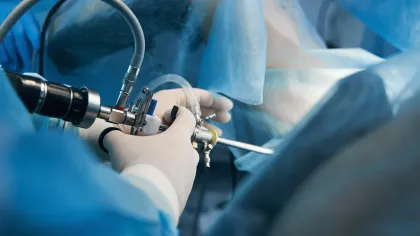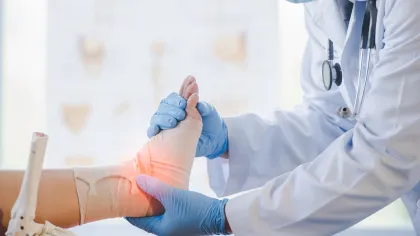Injuries and Chronic Instability
Our ankles consist of hard-working bones, muscles, tendons, and ligaments that move up and down and side-to-side. These control how much pressure is placed on our feet when we walk or run. Living with chronic pain or experiencing an injury to your ankle can severely limit your mobility. Ankle surgery by an experienced orthopedic surgeon, who has advanced training beyond what podiatrists receive, can relieve your pain and restore your mobility. Surgery to your ankle can help fix:








